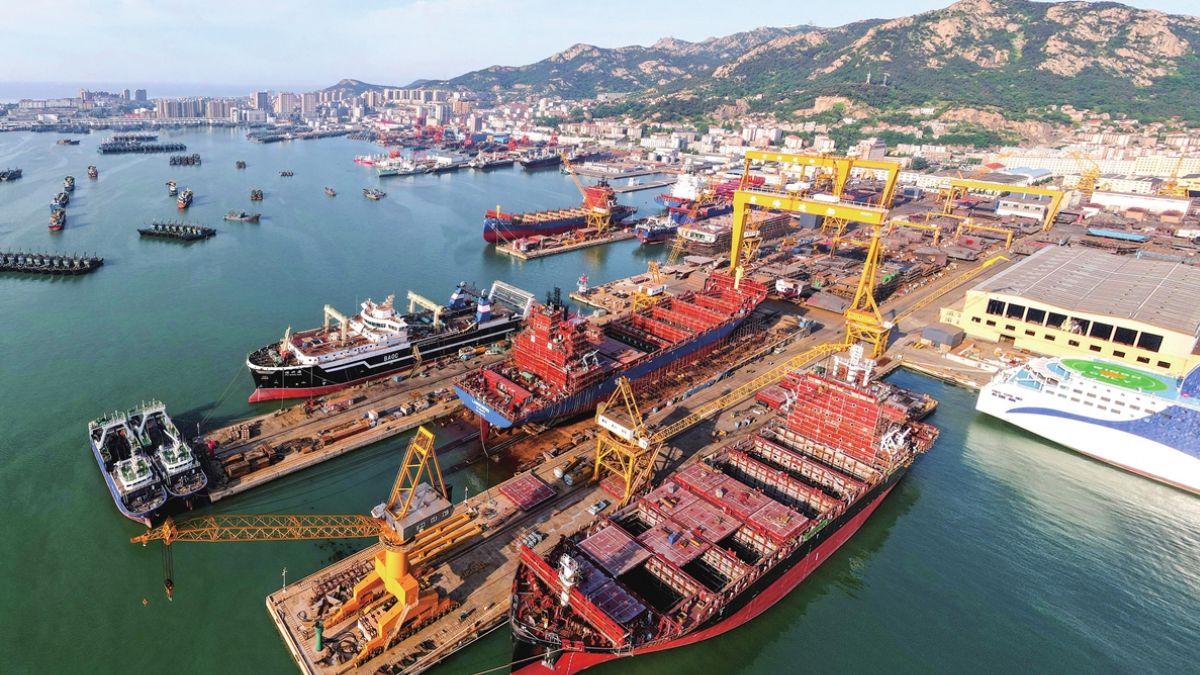 Image Credits: Global Times
Image Credits: Global Times
With a mega-merger in the works to establish its shipbuilding industry, China is well-positioned to further solidify its standing as a global maritime powerhouse. China State Shipbuilding Corporation (CSSC) and China Shipbuilding Industry Corporation (CSIC), two of the biggest state-owned shipbuilders in the country, are anticipated to merge to form the largest shipbuilding conglomerate in the world.
Beijing’s overarching plan to reorganize state-owned enterprises (SOEs) and create nationally competitive champions is reflected in the merger. China hopes to establish a shipbuilding juggernaut that can rule the world market by merging the assets, know-how, and market shares of CSSC and CSIC, especially in high-tech and high-value industries like LNG carriers, offshore engineering, and naval vessels.
China’s rise to the top of the world shipbuilding rankings has been largely attributed to CSSC and CSIC, two formidable companies in their own right. While CSIC is based in Beijing and specializes in building military vessels and cutting-edge marine equipment, CSSC is headquartered in Shanghai and focuses on building commercial ships. It is anticipated that this merger will reduce duplication, boost productivity, and stimulate innovation, putting the new company in a stronger position to take on South Korean and Japanese shipbuilders, who have historically dominated the sector.
China will take the lead in producing next-generation ships as a result of the combined entity’s size and ability to invest in research and development, especially in light of the growing environmental regulations and the push for decarbonization in the maritime industry.
China’s Belt and Road Initiative (BRI) is expected to benefit from the consolidation since the new, larger shipbuilding company will be better able to assist the development of maritime infrastructure throughout Asia, Africa, and Europe.
The integration of two sizable, intricate organizations with disparate operational cultures is one of the anticipated hurdles for the merger, but the potential rewards are enormous. Should the amalgamated CSSC-CSIC organization prove prosperous, it will not only bolster China’s supremacy in the shipbuilding sector but also assume a crucial function in moulding the trajectory of the worldwide maritime domain.
